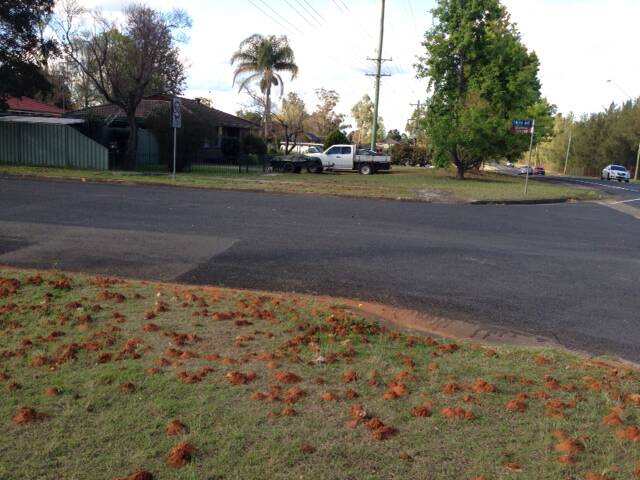
Little creatures found burrowing in a Richmond front yard could be part of a solution to threats facing Australian agriculture.
Create a free account to read this article
$0/
(min cost $0)
or signup to continue reading
Alan Eagle of Hawkesbury Harvest wondered what all the little mounds of dirt were that appeared each September in his front yard. He said they’d been appearing each spring for the past 10 years, and would be gone six weeks later.
‘‘I just thought they were ants pushing up a bit of dirt, you know, and I’d mow over the top of them,’’ Mr Eagle said.
On further investigation last September, he found to his great surprise they were bees. He contacted UWS and Dr Michael Batley from the Australian Museum, who was working in the UWS apiary, told him they were ground nesting bees which had previously only been recorded on the Queensland border and in Victoria.

‘‘They don’t have a queen bee — they’re solitary bees,’’ Mr Eagle told the Gazette. ‘‘They just get down there and lay their eggs and the old ones go away and die. Wasps can get in there and give them a bit of grief but they said this is a strong colony and the wasps haven’t taken hold there.’’
Dr Batley told him the species was Leioproctus (hadrocolletes) fulvus and that very little was known about them — they don’t even know which flowers they visit. He told Mr Eagle ‘‘even your observation that only one generation emerges per annum is not recorded in the literature’’.
UWS apiary manager Michael Duncan told the Gazette they had only become aware of the existence of the bees in Richmond through Alan Eagle’s emails. Mr Eagle had also alerted the university to the fact such mounds were also across the road from his house, in the UWS grounds.
‘‘Alan’s a great example of citizen scientists,’’ Mr Duncan said.
He explained that the discovery of the ground-nesting bee here is significant as a possible future tool for agriculture as European honey bees are under threat worldwide.
They do most of the heavy lifting of pollinating Australian crops, but the species has been devastated by the varroa mite, which hasn’t made it to Australia yet, but is very close, having made it to New Zealand. When it does get into Australia, it could also devastate our populations.
‘‘Given the size, the hairiness and density of the nesting aggregations, I think [the ground-nesting bee] is one of the species we should think about as a possible replacement for the European honey bee,’’ Dr Batley said.
Mr Duncan said they had good reason to believe the varroa mite wouldn’t be able to attack the ground-nesting bees as it had only ever been found on Apis species, and the ground-nesters were a non-Apis species.
‘‘Next season we’ll see what they do, what they feed on. If we could find a way to make a transportable nest, they could be used in agriculture.’’

